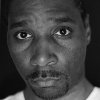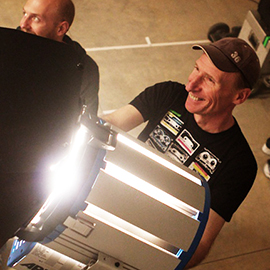ASK & DISCUSS
INDEXNeed to light a large space.
9 years, 6 months ago - Richard Woodburn
I have a short to film in the next couple of weeks but the original place fell through which had tons of natural lighting. Now I have a space of 10x6x8 meters with no windows or natural light. I have to light it and make it look like daylight. I can't bounce off walls or ceilings so will need extra lighting and bounce boards. How would a lighting guy approach this?
Only members can post or respond to topics. LOGIN
Not a member of SP? JOIN or FIND OUT MORE
9 years, 6 months ago - simon battensby
Hi Richard, This is hard to answer without knowing the "intention" of the scene, (comedy / horror / interview etc), but here goes.
I am guessing you are on a low budget, as otherwise you'd have a Gaffer to help you. In which case I'd rent tungsten lights, as they give a lot of light for very little money. I'd suggest a minimum of four 1000 or 2000watt lights (1k's or 2ks ). All with dimmers. Dont forget extension cables, and does the venue have square 13A plug sockets ? : most rental houses will supply round 16A extensions, so remember to ask for 16A to 13A jumpers, or you won't be able to plug in your lights ! Also about 8-10 light stands and sand bags, and one 4 x 4 white/silver foam board.
Here is the method:
Try to light the light the subject (actors) and background separately, so position the camera next to one wall, and put your talent in the center the room, away from the back wall so they dont cast shadows on it as they move about.
Divide your lighting package into 4 groups. (Background light + Key light+ Fill light + one spare).
Now you can position lights two lights illuminate the background wall ( try one general flat light flooding over the whole wall, plus a brighter shaft of "daylight" slanting across the wall, and angle the shaft high or low angle to suggest the time of day.) Possibly add a cuccoloris/ tree branch/ venetian blinds to dapple the light effect if appropriate to the scene.
Next another light should be set off to the side of the actor and pointing at the actors ear, (assuming actor is looking straight at camera). This is your key light. It needs to be diffused through a large sheet of plastic shower curtain or similar that is positioned at least 2 meters from the (hot) light source.
A translucent white shower curtain (£3 from tescos) suspended from a broom pole that's gaffered between two lighting stands is a very cheap fix ! You are aiming to create a soft yet directional beam of light that will wrap around the actors face in a flattering way. You can experiment with moving the light / curtain combo further behind the actor, so it gives more of a rim lit (dramatic / noir) effect, or move it to shine from the front (camera) side more directly onto the face. Frontal lighting will give a more flattering effect, especially to women, and a happier / comedy feel. Also good for interviews.
Finally you need your fill light. This typically shines from the opposite side to the key light, and usually from a 45 degree angle between the camera and the actor. It's job is to "fill in" the shadows caused by the key light. It is always less bright than the key light, and if you are on a budget, you might be able to use a 4x4 white or silver bounce board instead, and just bounce some of the wasted key light back to fill in the darker side of the face.
You have one light left, you can ignore it , or try using it from high and behind as a hair light, or as extra shaft of daylight shining onto the actors shoulders to give separation from the background if necessary...
That's it really, the rest is just tinkering with brightness levels using the dimmers until you have a look you like. If you are inexperienced with lighting I'd strongly advise getting in there the day before to shoot a test with a friend to see what works. It is a horrible feeling trying to light whilst the crew are watching you, looking at their watches !
Best of luck,
Simon Battensby.


